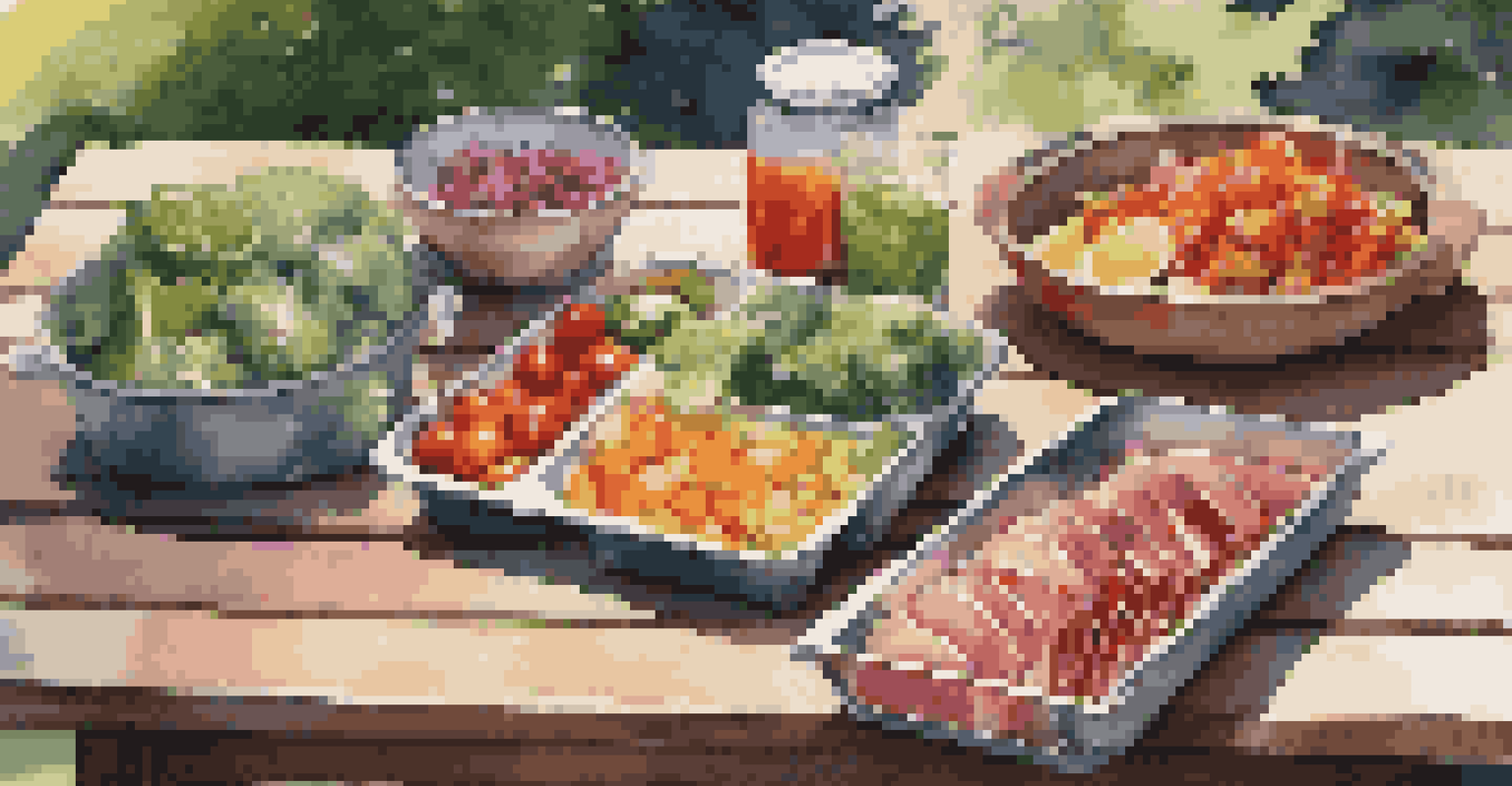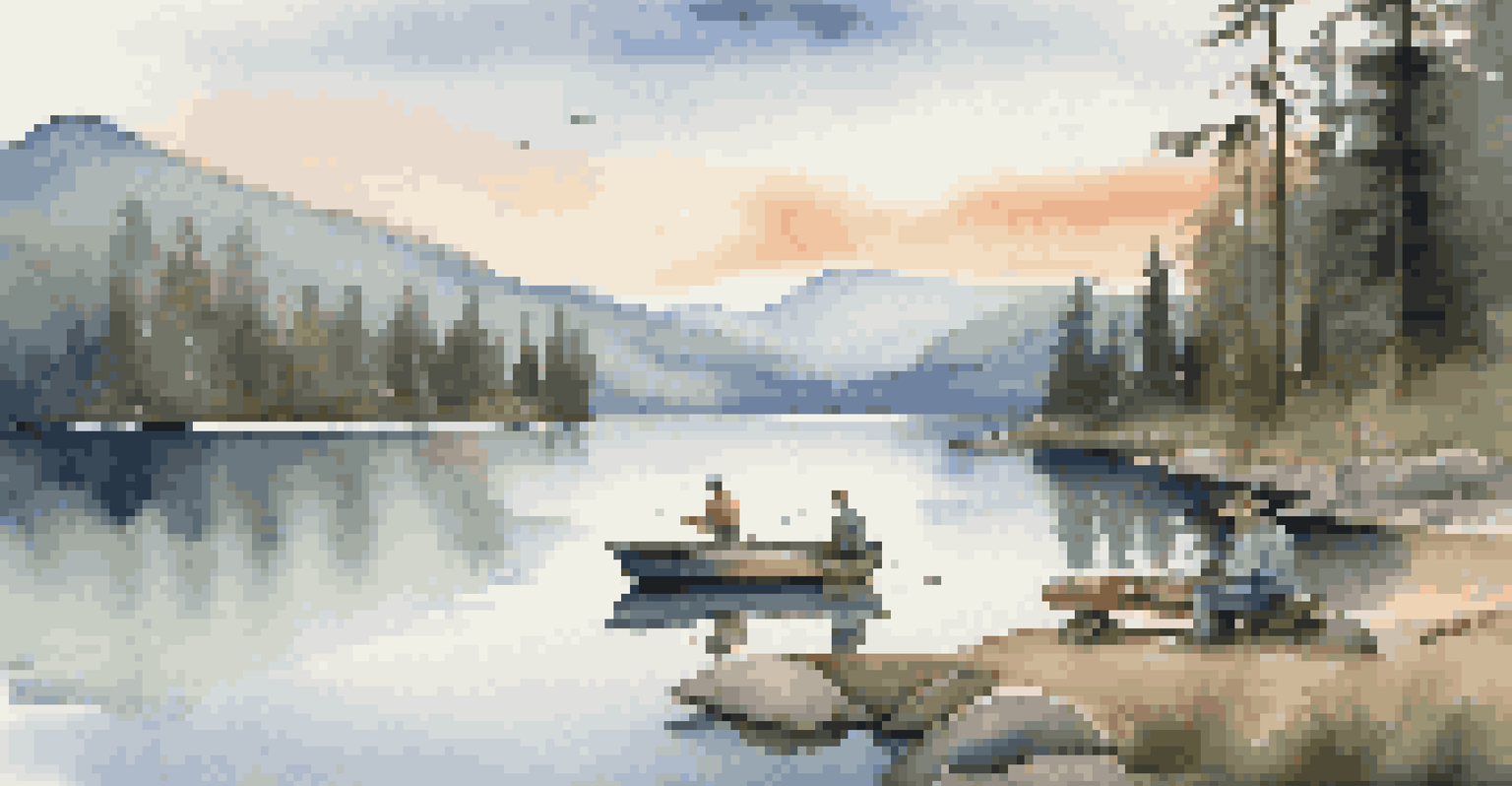Camping Cooking Techniques: Mastering Your Outdoor Kitchen

Essential Gear for Your Camping Cooking Adventure
Before you hit the trails, it’s crucial to pack the right cooking gear. A portable stove, cooking utensils, and a sturdy cooler can make all the difference in your outdoor kitchen experience. Think of your gear as the toolbox for a carpenter; without the right tools, even the best chef can struggle.
The fire is the mainstay of the camp; it provides heat, light, and a place to gather and share meals.
Don’t forget about lightweight cookware like pots, pans, and even a trusty cast-iron skillet. These items not only help you cook but can also double as serving dishes. Investing in compact, multi-functional tools can save space and enhance your efficiency while camping.
Lastly, make sure to include items like a cutting board, biodegradable soap, and a sponge. Keeping your cooking area clean is just as important as cooking itself. A well-stocked gear list ensures you’re prepared for anything nature throws your way!
Building a Fire: The Heart of Outdoor Cooking
A good campfire is the cornerstone of outdoor cooking. It’s not just about warmth; it’s your main cooking source. Start by gathering dry wood and kindling, and remember the classic ‘teepee’ method for building your fire. The flames will dance, and soon enough, you’ll have an inviting cooking space.

Once your fire is roaring, you can adjust the heat. Using rocks to create a cooking surface or a grill grate can help you control the intensity. Think of fire management as a dance; you need to keep the rhythm to achieve the perfect sear on your meal.
Essential Gear for Camping Cooking
Packing the right cooking gear, like portable stoves and lightweight cookware, is crucial for a successful outdoor cooking experience.
Keep in mind that safety should never take a backseat when cooking over a fire. Always have water or sand nearby to extinguish flames if needed. Enjoy the ambiance of the fire, but respect its power and potential hazards.
Cooking Techniques: From Grilling to Foil Pack Meals
Grilling is a classic camping cooking technique that brings out the best flavors in meats and veggies. Whether you’re using skewers or a grill grate, the smoky flavor adds a unique touch. Imagine the sizzle as you toss on marinated chicken or fresh corn; it’s a feast for the senses.
Leave nothing but footprints, take nothing but memories.
Another fantastic method is foil pack cooking. Simply wrap your ingredients in foil and place them near the fire or on a grill. This technique is not only easy but also minimizes cleanup. Picture a delicious medley of potatoes, bell peppers, and sausage steaming away in a shiny packet, ready to burst with flavor.
Lastly, don’t overlook the power of one-pot meals. They’re perfect for camping since you can cook everything in a single pot. Think hearty stews or pasta dishes that keep you warm and satisfied after a long day outdoors.
Meal Prep: Planning for Delicious Camping Cuisine
Preparation is key to enjoying your camping meals without stress. Before you leave, create a meal plan and prep ingredients. Chopping vegetables and marinating proteins at home will save you time and effort at the campsite, allowing you to focus on enjoying the great outdoors.
Consider pre-cooking some meals that can be easily reheated over the fire. Chili, soups, or casseroles travel well and can be a comforting option after a day of hiking. It’s like bringing a taste of home to your campsite.
Fire Safety is Critical Outdoors
Managing your campfire safely is essential not just for cooking but also for ensuring a safe and enjoyable camping experience.
Don’t forget to pack snacks! Easy-to-eat foods like trail mix, granola bars, and fresh fruit keep energy levels up during your adventures. Having a variety of meals and snacks available ensures everyone stays happy and fueled.
Safety First: Cooking Outdoors with Care
Cooking in the great outdoors comes with its own set of safety rules. Always keep raw foods separated from cooked foods to prevent cross-contamination. Think of your camping kitchen as a mini health department; cleanliness is essential for a safe dining experience.
Make sure to store perishable items in a cooler and check temperatures regularly. Food safety is paramount—nothing ruins a camping trip faster than foodborne illness. Use a thermometer to ensure meats reach safe cooking temperatures.
And remember, fire safety is non-negotiable. Never leave your campfire unattended, and always extinguish it completely when you’re done. Your campsite should be a haven of enjoyment, but it’s vital to respect nature and practice safe cooking habits.
Embracing Nature: Cooking with Local Ingredients
One of the joys of camping is the opportunity to embrace local flavors. If you’re near a lake, consider fishing for your dinner. Freshly caught fish grilled over an open fire can be a highlight of your trip, connecting you to the land in a delicious way.
Foraging for edible plants or mushrooms can add a unique twist to your meals. Just make sure you’re knowledgeable about what’s safe to eat. It’s a bit like a treasure hunt; the more you know about your surroundings, the more rewarding the experience.
Leave No Trace After Cooking
Cleaning up properly and minimizing waste helps preserve the beauty of nature for future campers to enjoy.
Using local ingredients not only enhances your meals but also fosters a deeper connection to your camping environment. Each bite becomes a celebration of the landscape, making your camping experience even more memorable.
Cleaning Up: Leaving No Trace in the Wilderness
After the cooking and feasting come the cleanup, which is just as important as the cooking itself. Always pack out what you pack in—this includes food scraps, packaging, and any other waste. Think of it as a promise to nature; by leaving no trace, you ensure that beautiful camping spots remain pristine for others.
Using biodegradable soap and a sponge to clean your dishes helps minimize your impact on the environment. Set up a designated washing station away from water sources to protect local ecosystems. It’s a small effort that goes a long way in preserving nature’s beauty.

Finally, encourage everyone in your group to be part of the cleanup process. Making it a team effort can foster camaraderie and ensure that everyone plays a role in caring for our shared outdoor spaces.